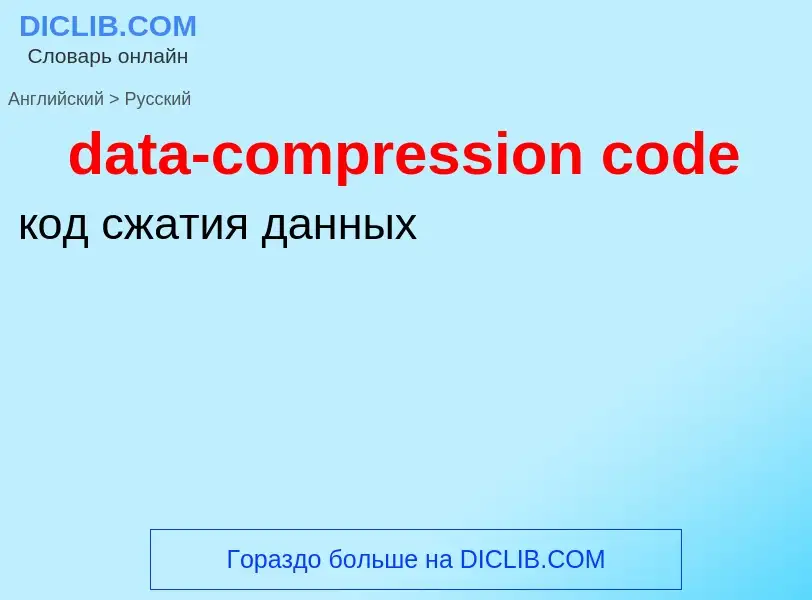Tradução e análise de palavras por inteligência artificial ChatGPT
Nesta página você pode obter uma análise detalhada de uma palavra ou frase, produzida usando a melhor tecnologia de inteligência artificial até o momento:
- como a palavra é usada
- frequência de uso
- é usado com mais frequência na fala oral ou escrita
- opções de tradução de palavras
- exemplos de uso (várias frases com tradução)
- etimologia
data-compression code - tradução para russo
общая лексика
с потерями (частичной потерей) информации
обычно об алгоритме сжатия данных, например изображения
Смотрите также
общая лексика
сжатие с потерей данных, необратимое сжатие
применяется для видеоизображений и аудиозаписей. После декомпрессии качество восстановленного изображения несколько ухудшается, хотя это может быть внешне и незаметно
Definição
Wikipédia
In data compression, a universal code for integers is a prefix code that maps the positive integers onto binary codewords, with the additional property that whatever the true probability distribution on integers, as long as the distribution is monotonic (i.e., p(i) ≥ p(i + 1) for all positive i), the expected lengths of the codewords are within a constant factor of the expected lengths that the optimal code for that probability distribution would have assigned. A universal code is asymptotically optimal if the ratio between actual and optimal expected lengths is bounded by a function of the information entropy of the code that, in addition to being bounded, approaches 1 as entropy approaches infinity.
In general, most prefix codes for integers assign longer codewords to larger integers. Such a code can be used to efficiently communicate a message drawn from a set of possible messages, by simply ordering the set of messages by decreasing probability and then sending the index of the intended message. Universal codes are generally not used for precisely known probability distributions, and no universal code is known to be optimal for any distribution used in practice.
A universal code should not be confused with universal source coding, in which the data compression method need not be a fixed prefix code and the ratio between actual and optimal expected lengths must approach one. However, note that an asymptotically optimal universal code can be used on independent identically-distributed sources, by using increasingly large blocks, as a method of universal source coding.


